Pricing Change
New pricing for orders of material from this site will come into place shortly. Charges for supply of digital images, digitisation on demand, prints and licensing will be altered.
Arran, Lochranza Castle
Castle (Medieval)
Site Name Arran, Lochranza Castle
Classification Castle (Medieval)
Canmore ID 39807
Site Number NR95SW 1
NGR NR 93314 50675
Datum OSGB36 - NGR
Permalink http://canmore.org.uk/site/39807






















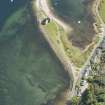















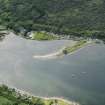



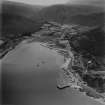










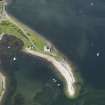







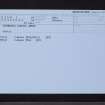


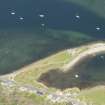


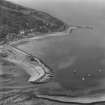
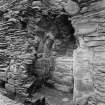







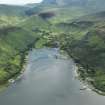
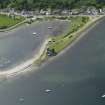

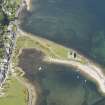

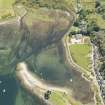














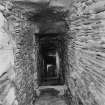




First 100 images shown. See the Collections panel (below) for a link to all digital images.
- Council North Ayrshire
- Parish Kilmory
- Former Region Strathclyde
- Former District Cunninghame
- Former County Buteshire
NR95SW 1 93314 50675
NR 9332 5066. Castle (NR) (In Ruins)
OS 6" map (1924)
Lochranza Castle is now ruinous; in the main it is three storeys and an attic in height, with the S wing two storeys higher. The original castle was a late 13th-early 14th c oblong hall-house of two main storeys having a small square tower projecting from its SW corner. Much of this early work remains, but its present appearance derives mainly from a thorough reconstruction carried out in the late 16th c when the upper works were renewed and heightened and the interior remodelled.
It was possibly erected by a member of the Stewart family of Menteith (J Dunbar 1973); it was occupied in 1614 by troops of James VI, and later that century by Cromwell's forces.
D MacGibbon and T Ross 1889; S Cruden 1960; N Tranter 1970.
Lochranza Castle (DoE nameplate) is as described in the previous information.
Visited by OS (BS) 6 December 1977
Aerial Photography (1970)
Oblique aerial photographs of Lochranza Castle, Arran, taken by John Dewar in 1970.
Publication Account (1985)
This outwardly simple and gaunt-looking ruined 'tower-house hides, within its walls, a surprise which gives added interest to what would otherwise be a comparatively nm-of-the-mill tower. Until recently it was thought to be a 16th century tower-house of typical L-shaped plan, but more detailed analysis of the fabric by Stewart Cruden suggested that incorporated within the 16th century work there was a much earlier and more interesting building. Subsequent restoration of the castle confirmed Cruden's interpretation, and it is now clear that Lochranza Castle began life as a hall-house of the late 13th to mid 14th century.
Hall-houses are comparatively rare, the majority having been destroyed or, as in the case of Lochranza, incorporated into later buildings. They comprise small, compact buildings characteristically used by the lesser nobility whose finances could not extend to the construction of larger castles. In many ways they are the forerunner of tower-houses but they were never designed to reach the height of towers, and the principal accommodation was normally arranged on two floors, the lower being used for storage, while the upper floor contained the lord's hall. They are commonly equated with the English fortified manor house, and in a Scottish context they should be compared with early tower-houses such as Dundonald Castle, no. 40. The early features at Lochranza which led Cruden to propose the existence of the hall-house are a blocked doorway on the north-east wall, which gave direct access to the lord's hall, a number of long arrow-slits and several narrow windows with widesplayed jambs and wide internal openings.
In the 16th century the hall-house was heightened to turn it into a conventional tower-house and crenellations were added. The internal arrangements were also considerably modified, with the principal entrance being moved to the middle of the south-west wall so that it would be overlooked by the wing that formed the foot on the L-plan.
Information from ‘Exploring Scotland’s Heritage: The Clyde Estuary and Central Region’, (1985).
Watching Brief (14 April 1997 - 17 April 1997)
NR 9332 5066 In April 1997 a watching brief was maintained by Kirkdale Archaeology during the excavation of a trench on the strip of land connecting Lochranza Castle to the S shore of the loch, providing a new water main along the coast road. The castle lies some 200m offshore in the loch at the end of a sand and gravel spur.
The spit comprised tidal sands and gravels, and the trench, 23cm wide and 30cm deep, was excavated across c 190m of its length. The only structural elements comprised two discrete areas of flat schist slabs buried to a depth of 20?25cm. These slabs appeared to be loosely laid, and of a single layer, buried in the beach gravels; their function is not clear.
Sponsor: Historic Scotland
G Ewart and P Sharman 1997.









































































































